Whether you are a snorkeller, like taking in coastal views or enjoy a wildlife cruise, you are a good chance to spot a seal. Or was it a sea lion? Sleek, dark and agile in the water, it can be hard to tell the difference so here are a few things to look for if you want a better idea of what you have spotted.
Disclosure: Please Note That Some Links In This Post May Be Affiliate Links, And At No Additional Cost To You, We Earn A Small Commission If You Make A Purchase. Commissions Go Toward Maintaining The Snorkel Spots Website.
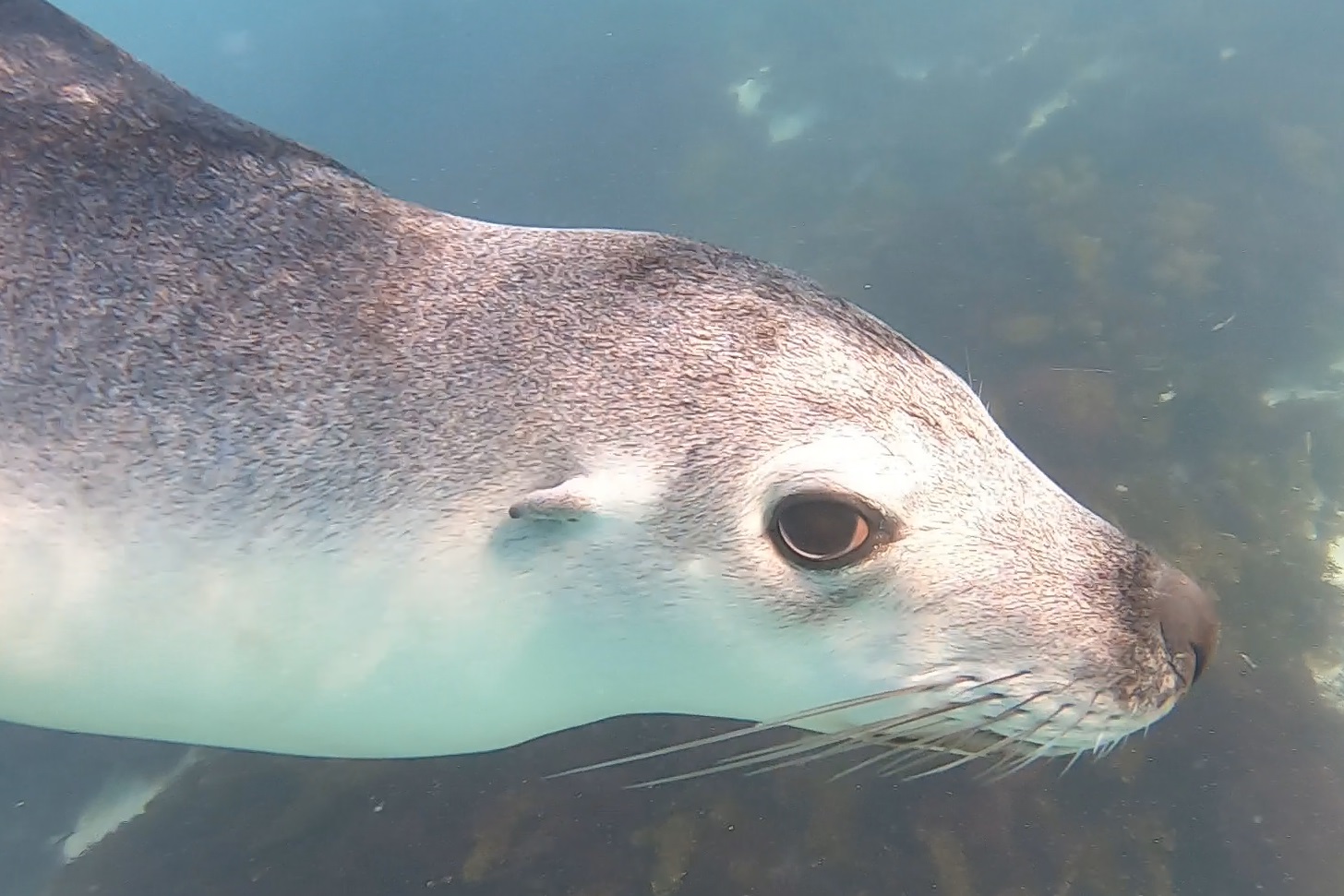
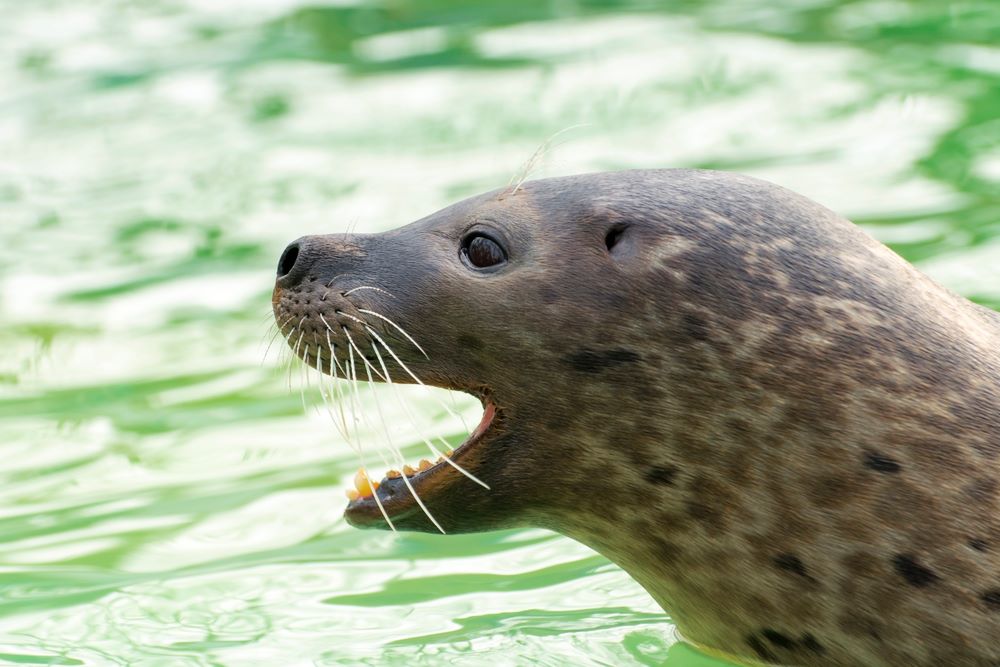
Sea Lions have Ear Flaps
This is a great way of telling the difference between seals and sea lions.
- Seals: Seals have small, pinhole-like ear openings on the sides of their heads.
- Sea Lions: Sea lions and Fur Seals have visible external ear flaps, giving them more prominent ears.
Are they Walking or ‘Blobbing’?
If you have seen a seal or sea lion moving on land it is easy to tell which is which.
- Seals: Seals move on land by undulating their bodies and using their front flippers to heave themselves along, sliding on their bellies.
- Sea Lions: Sea lions can rotate their hind flippers under their bodies, allowing them to walk on all fours, making them more agile on land and better climbers. That said, we watched a big sea lion decide to roll down a sand dune rather than walk, very funny!
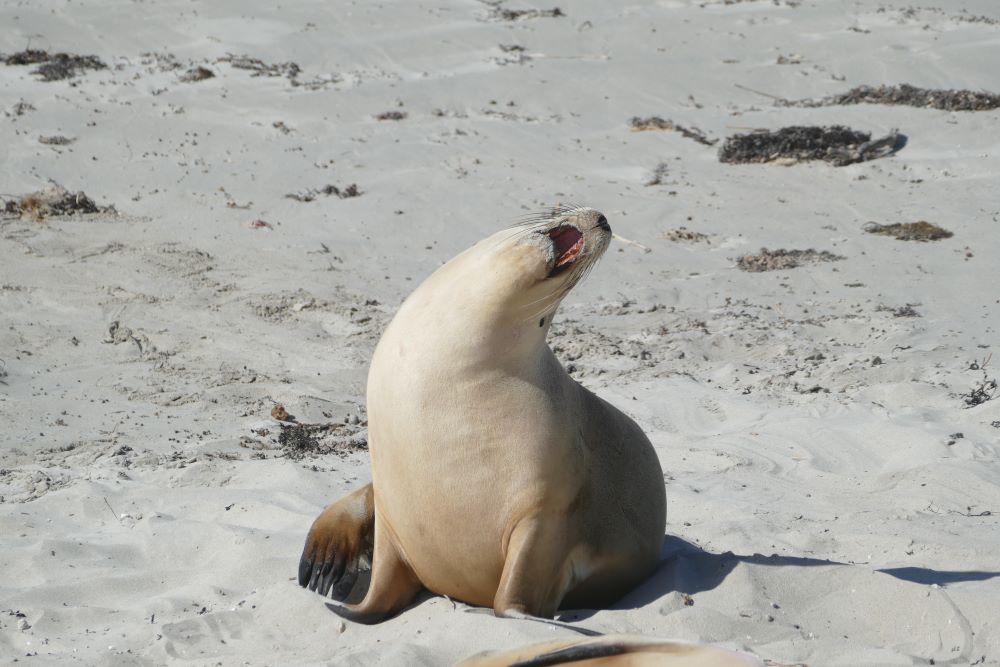

Sitting Position
If your seal or sea lion is not moving, you can identify it by how it sits on land.
- Seals: Seals usually lie flat on the ground when resting on land, and their heads are often held in a straight line with their bodies.
- Sea Lions: Sea lions often prop themselves up on their front flippers when on land, giving them a more upright posture, and their heads are lifted higher.
Front Flipper Shape
If you can get a good look at them on land, you will also notice a difference in their front flippers
- Seals: Seals have shorter, more paddle-like front flippers.
- Sea Lions: Sea lions have elongated, stronger front flippers with more defined digits.
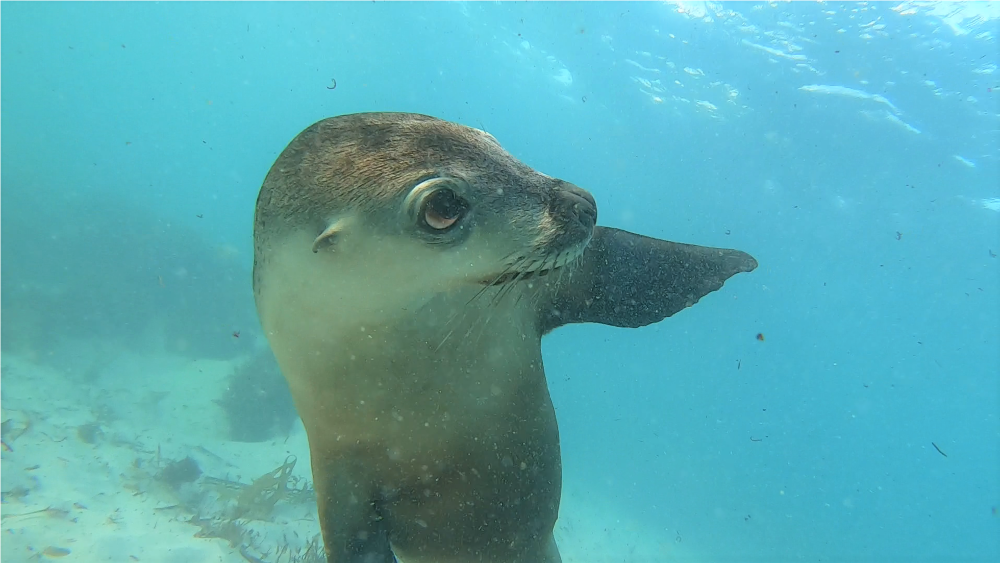
Movement in Water
Seals and sea lions also swim differently. You can look for this if you are lucky enough to see them in the water.
- Seals: Seals are generally more streamlined in the water, using a side-to-side motion of their hind flippers for swimming.
- Sea Lions: Sea lions are more agile in the water, using their powerful front flippers for propulsion.
Preferred Habitat
Sea lions and seals live in different environments
- Seals: Seals often prefer more remote, colder environments and are well-adapted to ice-covered waters.
- Sea Lions: Sea lions are commonly found in more temperate and warmer coastal areas.
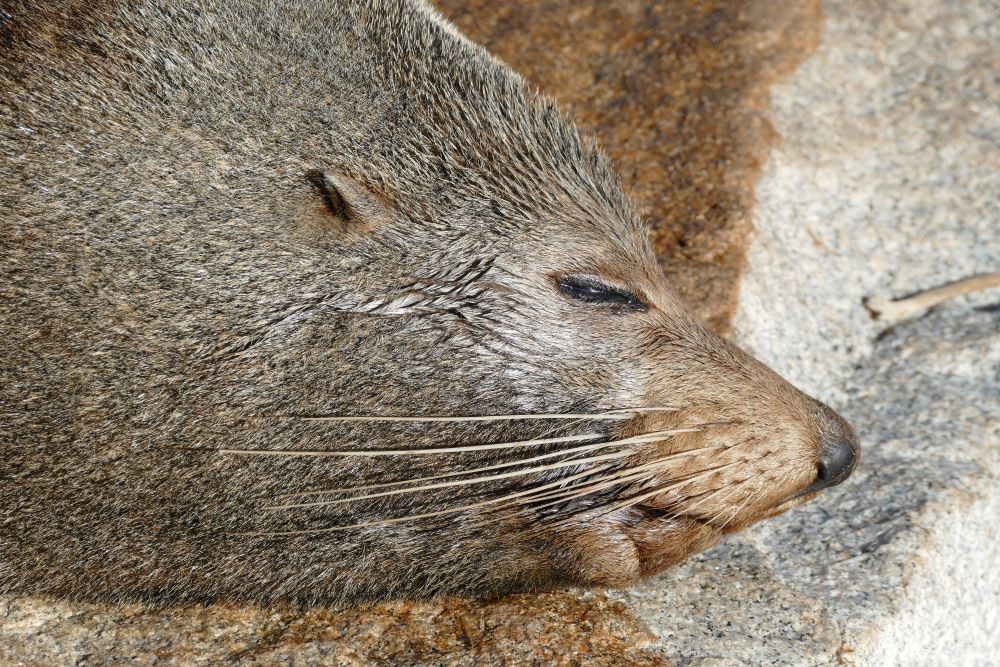
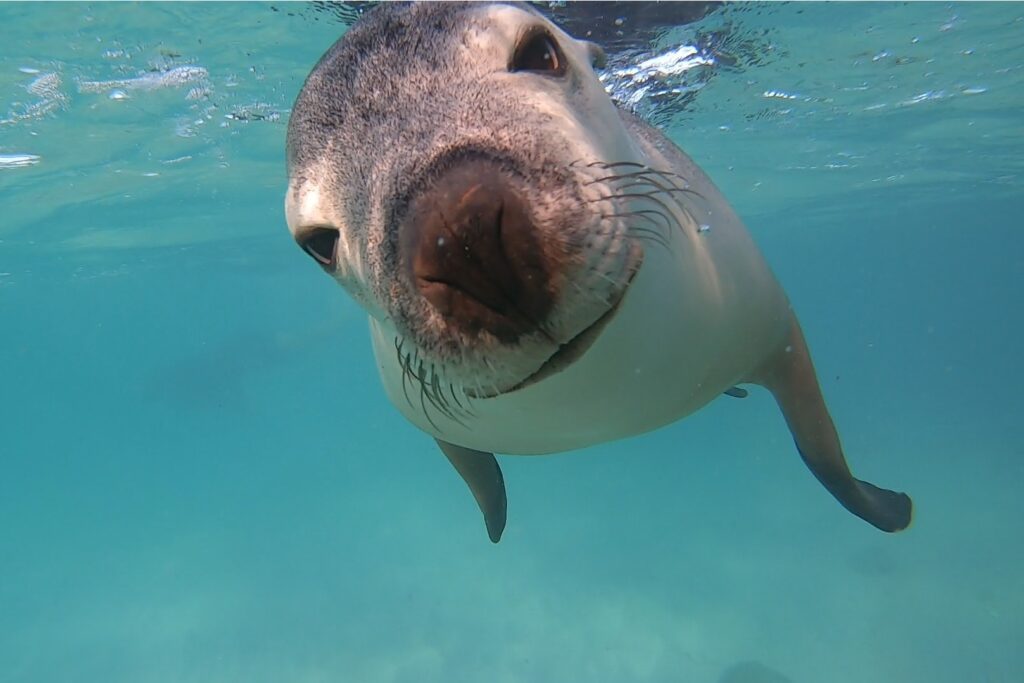
Nose Shape
If you have spotted a swimming seal or sea lion, check out their nose.
- Seals: Seals generally have a shorter, more cat-like nose.
- Sea Lions: Sea lions have a dog-like snout that is longer and more pronounced.
Social Structure
Have you spotted a loner or a social creature?
- Seals: Seals tend to be more solitary animals, coming together primarily for breeding.
- Sea Lions: Sea lions are more social and form larger colonies, with group activities such as barking, socializing, and breeding.
Buoyancy
You might not notice to look at them but…
- Seals: Seals are more buoyant in the water, and their bodies tend to be more streamlined.
- Sea Lions: Sea lions are less buoyant due to their heavier skeletons, allowing them to dive more efficiently.
Swimming Speed
It is not easy to measure how fast something is swimming but, in a race, sea lions would win
- Seals: Seals can swim at between 25 and 35 kph
- Sea Lions: Sea lions with their large front flippers can swim up to 50 kph.
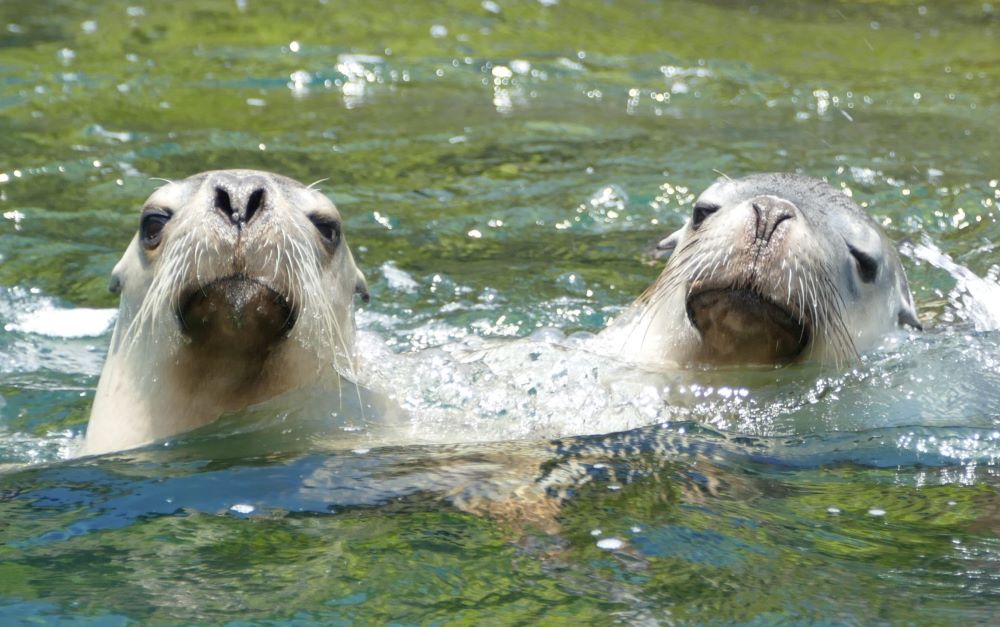
Fun facts about Seals and Sea Lions
How Many Species of Sea Lion?
There are 6 species of sea lions, including the California sea lion, Steller sea lion, South American sea lion, Galapagos sea lion, Australian sea lion, and New Zealand sea lion, each with its unique characteristics.
How Many Species of Seal?
There are over 30 species of seals, and they can be found in a variety of environments, from icy polar regions to temperate and tropical waters.
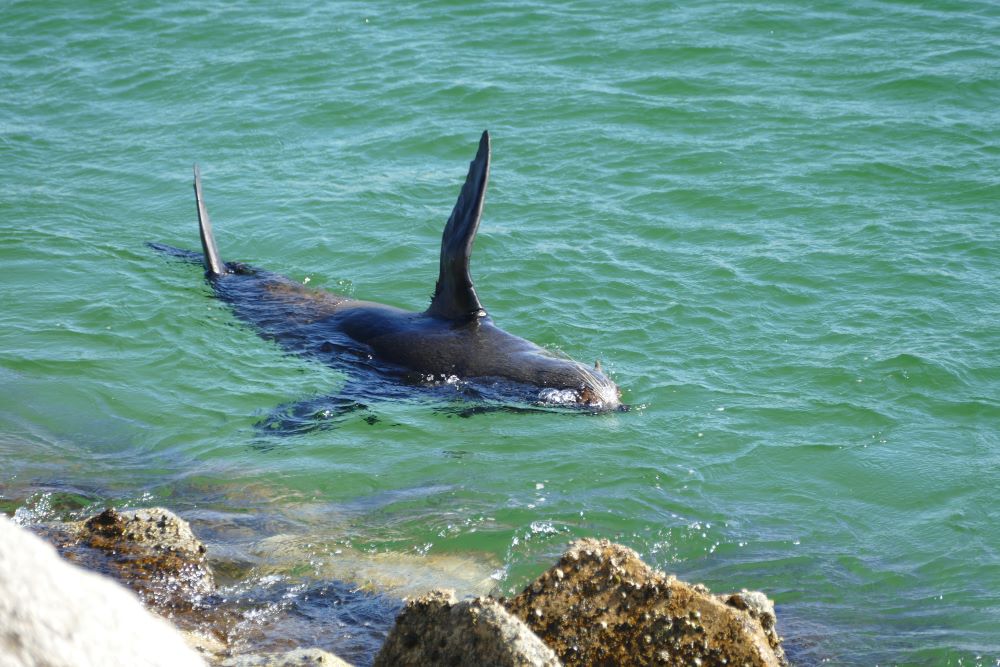
Staying Warm and Cool
Seals and Sea lions can regulate their body temperature. They can adjust the blood flow to certain areas of their bodies, such as their flippers, to conserve or release heat depending on environmental conditions.
Vocal Communication
Seals and sea lions are known for their vocalizations, including barks, growls, and eerie singing sounds. These vocalizations play a role in communication, locating each other, and during mating rituals.
Diet
Seals and Sea lions are carnivores and primarily feed on fish, squid, and occasionally crustaceans. They are skilled hunters, using their speed and agility to catch prey in the water.
Remarkable Diving Abilities
Seals are excellent divers and can reach impressive depths. Some species, like the Weddell seal, can dive as deep as 600 meters and hold their breath for over an hour.
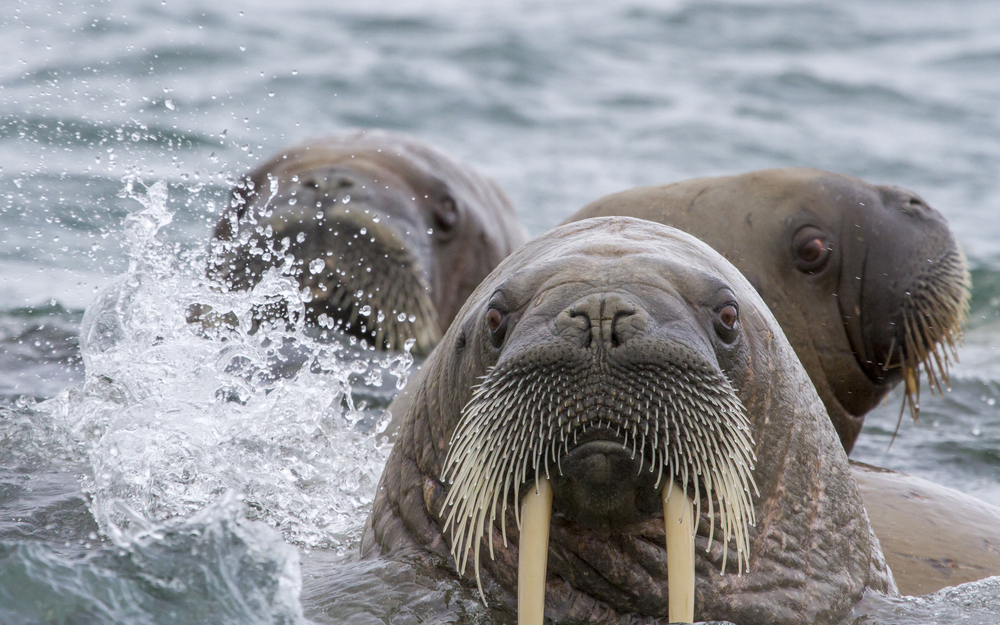
Seals with Tusks
The walrus is a member of the seal family and is the only seal that has tusks. The tusks can go grow up to 70cm long! Walruses only live in the Arctic region. If you think they look big – they are. Thanks to a thick layer of blubber to help them stay warm, they can weigh up to 1.5 tons.
Elephant without Tusks
The largest seal in the world is the southern elephant seal which can be over 6m long and weigh nearly 3 tons. Despite their name, unlike the walrus, elephant seals do not have tusks, but they do have a long drooping trunk-like snout.
Freshwater Seals
All but one type of seal or sea lion live in salt water. The exception is the Baikal seal that lives in the freshwater Lake Baikal in Siberia.
Lifespan
If seals and sea lions can avoid predators, depending on the species they can live for up to 40 years but most live for between 20 and 30m years.
- Fun Facts about Sharks - February 15, 2024
- Where can you Safely Swim with Sharks in Australia? - February 15, 2024
- How to Snorkel – 15 Tips for Beginners - February 15, 2024

